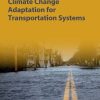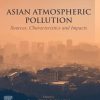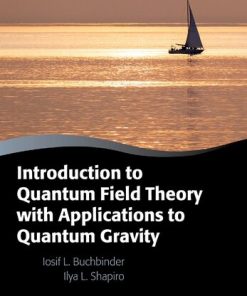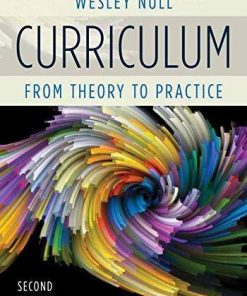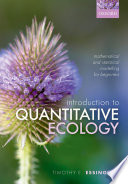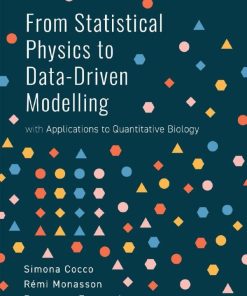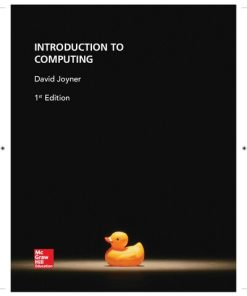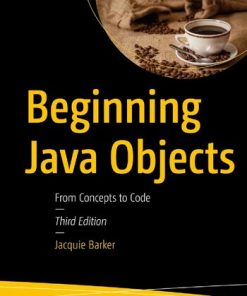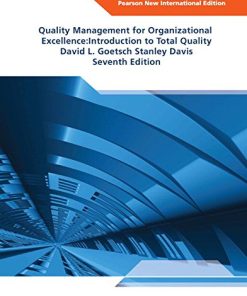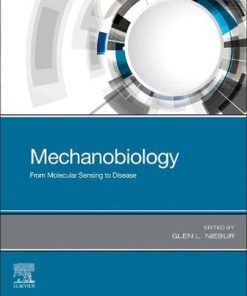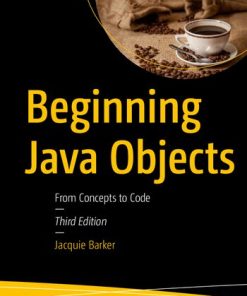(Ebook PDF) Introduction to Aerosol Modelling From Theory to Code 1st Edition by David Topping 1119625718 9781119625711 full chapters
$50.00 Original price was: $50.00.$25.00Current price is: $25.00.
Introduction to Aerosol Modelling : From Theory to Code 1st Edition by – Ebook PDF Instant Download/DeliveryISBN: 1119625718, 9781119625711
Full download Introduction to Aerosol Modelling : From Theory to Code 1st Edition after payment.
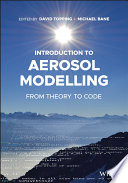
Product details:
ISBN-10 : 1119625718
ISBN-13 : 9781119625711
Author: David L. Topping
An aerosol particle is defined as a solid or liquid particle suspended in a carrier gas. Whilst we often treat scientific challenges in a siloed way, aerosol particles are of interest across many disciplines. For example, atmospheric aerosol particles are key determinants of air quality and climate change. Knowledge of aerosol physics and generation mechanisms is key to efficient fuel delivery and drug delivery to the lungs. Likewise, various manufacturing processes require optimal generation, delivery and removal of aerosol particles in a range of conditions.
Introduction to Aerosol Modelling : From Theory to Code 1st Table of contents:
1 Introduction and the Purpose of this Book
1.1 Aerosol Science and Chapter Synopses
1.2 Computers and Programming Languages
1.3 Representing Aerosol Particles as Model Frameworks
1.3.1 Size Distributions
1.3.2 The Sectional Distribution
1.3.3 The Modal Distribution
1.4 Code Availability
Bibliography
2 Gas-to-particle Partitioning
2.1 Adsorption
2.2 Equilibrium Absorptive Partitioning
2.3 Knudsen Regimes and the Kelvin Effect
2.4 Kinetic Absorptive Partitioning: The Droplet Growth Equation
2.4.1 Solving the Droplet Growth Equation: A Sectional Approach
2.5 Cloud Condensation Nuclei Activation
2.5.1 Köhler Theory
2.5.2 Hygroscopic Growth Factors and Kappa Köhler Theory
Bibliography
3 Thermodynamics, Nonideal Mixing, and Phase Separation
3.1 Thermodynamics and Nonideal Mixing
3.1.1 Chemical Thermodynamics
3.2 Activity Coefficient Model
3.3 BAT Model Implementation
3.3.1 Example 1: Calculation of Binary Mixture Activities Using the BAT Model
3.4 Phase Separation
3.4.1 Example 2: Detection and Computation of LLPS in a Binary System
3.5 Multicomponent Aerosol Thermodynamics Models
3.6 Activity and LLE Computations with the AIOMFAC Model
3.6.1 Customizing and Running AIOMFAC-LLE
Bibliography
4 Chemical Mechanisms and Pure Component Properties
4.1 Chemical Mechanisms
4.1.1 Gas Phase Only Model
4.1.2 Coupling the Gaseous and Condensed Phase Using a Fully Moving Sectional Approach
4.1.3 An Example Using the Sectional Model Generator JlBox
4.1.4 Modal Model for Condensational Growth
4.2 Chemical Identifiers and Parsing Structures
4.3 Coding Property Prediction Techniques
4.3.1 Group Contribution Methods
4.3.2 Vapor Pressure Prediction Methods
4.3.3 Example: Adding the SIMPOL Method to UManSysProp
4.4 Subcooled Liquid Density
Bibliography
5 Coagulation
5.1 Coagulation Probabilities and Rates
5.2 Stochastic Coagulation with Discrete Particle Masses
5.2.1 Gillespie’s Basic Algorithm for Discrete Number Concentrations
5.2.2 First Speedup: Binning Particles
5.2.3 Second Speedup: Discretize Time and Use Tau-leaping
5.2.4 Third Speedup: Large-number-limit Using Continuous Number Concentration
5.3 Coagulation with Continuous Particle Masses
5.3.1 Particle-resolved Approach for Coagulation
5.3.2 Sectional Approach for Coagulation
5.3.3 Modal Approach for Coagulation
5.4 Advanced Coagulation Topics
5.4.1 Coagulation for a Multi-dimensional Composition Space
5.4.2 Other Considerations
5.5 Introduction to Particle-resolved Monte Carlo (PartMC)
5.5.1 PartMC Input (.dat) Files Preparation
5.5.2 Spec File Preparation
5.5.3 PartMC Execution and Postprocessing
Bibliography
6 Nucleation: Formation of New Particles from Gases by Molecular Clustering
6.1 Modelling Particle Formation: From Atoms to Molecular Cluster Populations
6.1.1 The Discrete General Dynamic Equation
6.1.2 The Discrete Cluster GDE vs. the Continuous Aerosol GDE
6.1.3 Rate Constants of the Cluster Dynamics Processes
6.1.4 Cluster Formation in Different Atmospheric Environments
6.2 Coding the Discrete GDE: The Straight-forward Case of a One-component System
6.3 Multi-component Systems: Need for an Equation Generator
6.4 Brief Introduction to Atmospheric Cluster Dynamics Code
6.4.1 ACDC Input
6.4.2 Running an ACDC Simulation
6.4.3 Code Features Useful for Studying Clustering Mechanisms
6.4.4 ACDC Applications
6.5 From Clustering to Particle Growth: Implementation of Initial Particle Formation in Aerosol Dynamics Models
6.5.1 The Default Approach: Particle Formation Rate as an Input Parameter
6.5.2 The Dynamic Approach: Combination of Molecular Cluster and Aerosol GDEs
Bibliography
7 Box Models
7.1 box_model.py
7.2 Remapping Size Distribution When Using the Sectional Method
7.2.1 Quasi-Stationary Sectional Method
7.2.2 Moving Center Method
7.2.3 Hybrid Bin Method
7.3 Simulating Absorptive Uptake and New Particle Formation Simultaneously
7.4 Cloud Parcel Models
7.4.1 Sectional Cloud Parcel Model
7.5 SALSA
Bibliography
8 Software Optimization
8.1 Portability
8.2 Performance
8.2.1 Compiler Optimization
8.2.2 Profiling
8.2.3 Case Study: Speeding-up Box Model
8.2.4 Vectors
8.2.5 Hand Holding the Compiler
8.2.6 Case Study: PartMC
8.2.7 Interpretted Languages
8.2.8 Case Study: Droplet Growth Equation
8.3 Parallelization
8.3.1 Making the Most of a Single Node
8.3.2 Making Use of Multiple Nodes
8.3.3 Other Technologies
8.4 Collaborative Software Engineering
8.4.1 Coding Stylesheets
8.4.2 Modularity and Re-use
8.4.3 Version Control
8.4.4 Software Development Life Cycle
8.4.5 Continuous Integration and Unit Tests
8.5 In Conclusion
People also search for Introduction to Aerosol Modelling : From Theory to Code 1st:
introduction to aerospace materials
introduction to aerodynamics
introduction to aerospace structures and materials
an introduction to modern astrophysics solutions
an introduction to modern astrophysics carroll
Tags:
Introduction,Aerosol Modelling,Theory,Code,David Topping
You may also like…
Physics - Quantum Physics
Introduction to Quantum Field Theory with Applications to Quantum Gravity 1st Edition
Uncategorized
Mathematics
Computers - Computers - General & Miscellaneous
Computers - Programming
Beginning Java Objects: From Concepts to Code, 3rd edition Jacquie Barker
Science (General)
Mechanobiology: From Molecular Sensing to Disease 1st Edition
Computers - Programming


